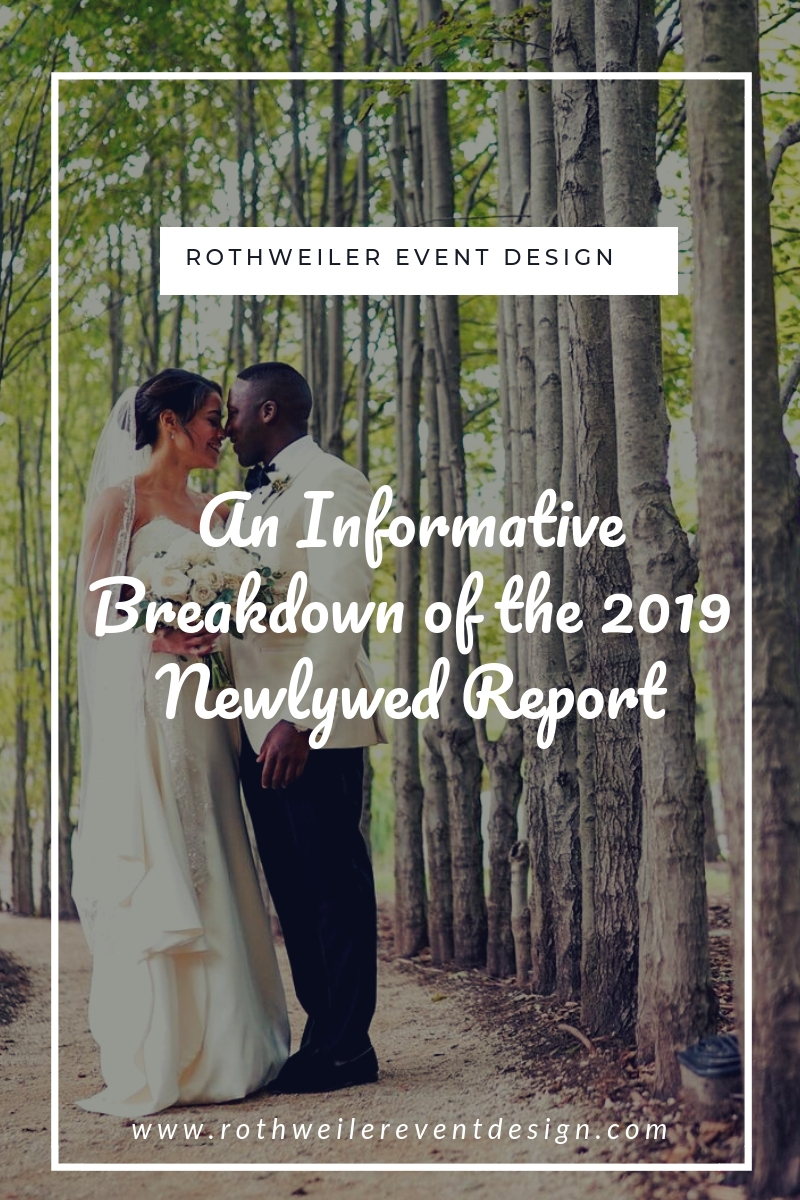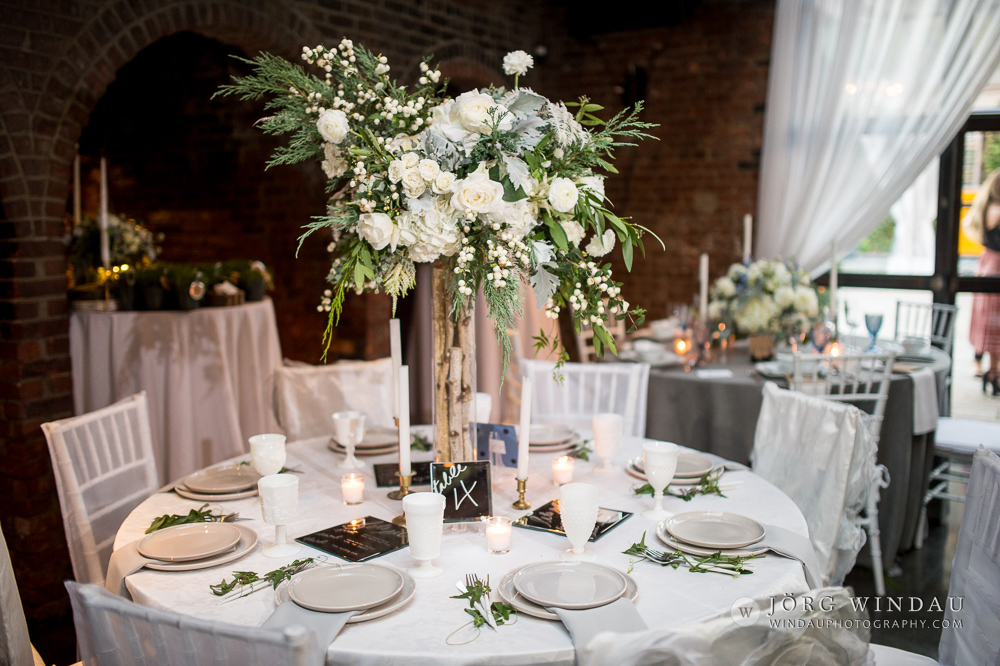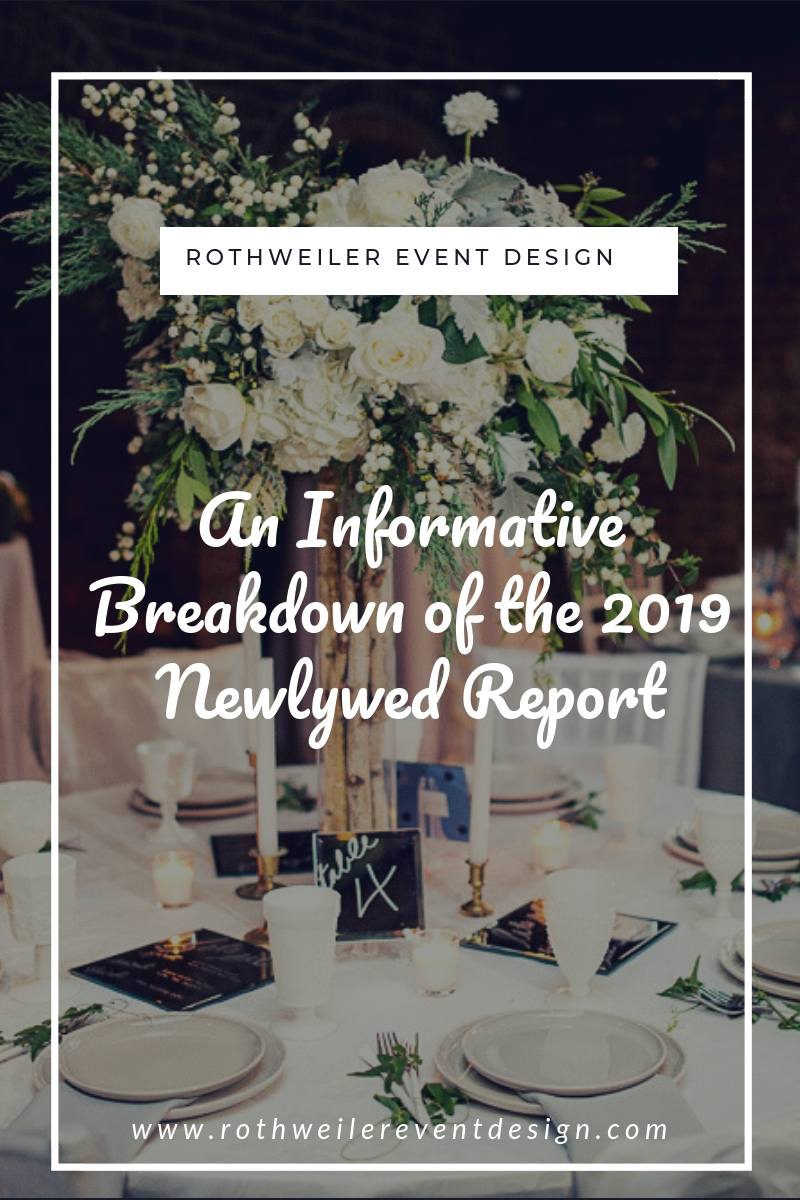The Newlywed Report is released annually and provides wedding data from the previous year such as average costs and wedding trends. You can see the whole thing right here. As the saying goes, “numbers don’t lie”, right?
What if they do? Most engaged couples have no idea what a wedding costs and constantly struggle with their wedding budget. In fact, The Newlywed Report states that nearly 80% of couples underestimate wedding costs when developing their initial budget. Well, if couples are using this report as a guide for what they should expect to spend, and the numbers are deceiving, the first budget they put together will absolutely be wrong.
Real weddings should be an accurate source of gaining information though. In this blog, I’ll breakdown the entire 2019 Newlywed Report, and explain why it’s not a good guide for engaged couples.
The 2019 Newlywed Report
The Newlywed Report is put together by a website called Wedding Wire. If you’re not familiar with the site, it’s basically a place where couples can look for venues and vendors online. When a bride or groom wants to use Wedding Wire, they create a free account which gives the website their contact information and any wedding details they choose to share. Once the wedding is over, the newlyweds are sent a poll to help determine wedding trends, average costs, and other information from the past year.
Over 18,000 couples signed up with Wedding Wire give their answers, making this the largest wedding study in the world. In addition to their data, Wedding Wire says that they use “findings from ad hoc studies conducted in 2018, as well as behavioral data analyzed by the company’s own team of data scientists”.
I have no idea what that means, but OK.
This might surprise some people, but wedding professionals are just as interested, if not more interested, in this report than couples that are wedding planning. Knowing what couples want and what they are spending, is valuable information to have in order to do well in the wedding industry. The problem, though, is that even with this being “the largest wedding study in the world”, it’s very deceiving.
The couples are real and the numbers are real, so what’s the problem? Well, let’s back up a little bit…Warning: this might get a little tedious, but please hang with me.
Whenever a poll is created, in order to make the results valid, certain criteria has to be followed. Included in the necessary criteria is the level of confidence you have that those polled are telling the truth. We saw, first hand, in the 2016 election, that many people were not truthful in whom they would be voting for. You know what else people like to lie about? How much they spend on their wedding. However, that’s not the biggest issue with this poll, so let’s just pretend everyone was truthful.
The actual population, the people being polled, is the piece of criteria that creates the deceiving results. 2 million couples, on average, get married every year in just The United States alone. 18,000 couples represents .9% of every couple that got married in 2018. All of the couples that got married is not the target population for the poll though.
And that is the problem.
A statistically valid poll has to be random. The population polled has to be random. Because this poll was only given to those couples signed up with Wedding Wire, the poll is anything but random. More accurately, all of the data reflects Wedding Wire Newlyweds only and ignores the other 99% of the population that got married last year.
You cannot poll 100 Republicans (or Democrats) and expect to get a non-bias result because that’s not random. You cannot poll a wedding planner’s clients and expect to get a non-bias result no matter how diverse the couples are, because not everyone hires a wedding planner and thus the result is what? Not random.
This is significant to wedding professionals whether they advertise with Wedding Wire or not, because the numbers only reflect the couples from that one website. That sample of couples can be diverse AF racially, income-wise, and so on, but it doesn’t matter because they all have one major thing in common: They use the same wedding platform. What about everybody else? What about the couples that aren’t attracted to Wedding Wire’s model, or the ones that have never heard of it? What are they spending?
Well, whatever the answer is, it’s not in The 2019 Newlywed Report.
Breaking Down The Report
While wedding professionals use this report, there are plenty of couples that look it over as well. If you don’t know what a wedding costs, a simple google search will turn up a few results. This report does a disservice to couples who will then see these numbers and use them as a foundation to build their budget. The first thing couples will see when they look at the report is the following:
“The largest study of today’s wedding planning journey in the U.S. based on data from over 18,000 newlyweds married in 2018.”
-Wedding Wire-
You have to scroll all the way to the bottom to find out that those newlyweds are strictly from Wedding Wire. How often do people do that? The longer the email, the message, or whatever, the smaller the chance that someone will read until the end. So, let’s break down the report into manageable pieces…
Getting Engaged
According to The 2019 Newlywed Report, the average spend on an engagement ring is $5,000 with 71% having a diamond as the main stone. Only 50% of Wedding Wire couples reportedly get the engagement ring from a brick and mortar store, and the most popular month to propose is December.
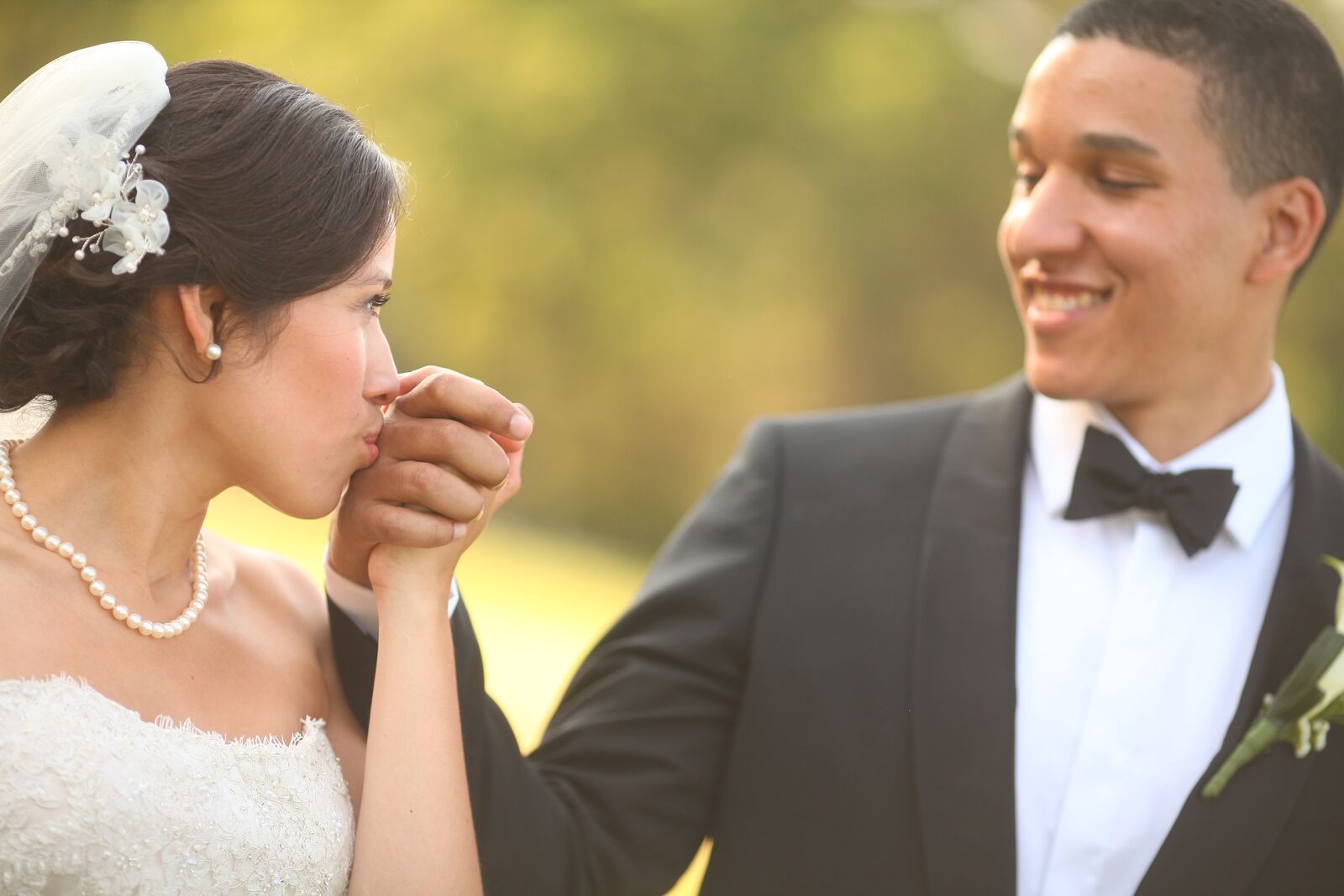
There is also a heavy emphasis on how these were millennials polled, and it starts in the engagement section. Unless you’ve been under a rock for the past few years, you’ve heard how marketing to millennials would be different than marketing to other generations. It’s my own personal opinion that the years (1981-1996) the millennial generation falls into are inaccurate. Much like in music history, where the style of music based on the decade, AKA 60s music, 80s music, etc., didn’t start right at the beginning of the decade, I think the millennial generation is further into the 80s.
Wedding Wire used 1982-1996 to represent the millennial generation, making the age range for 2019 between 23-37. They break down various groups and give the average age of the couple in each one; they also say the average age of couples in total is 33. But, according to the U.S. Census, the average marrying age is actually 27.4 for women and 29.5 for men. Both the Wedding Wire age and the Census age fall in the millennial category, but there’s a big difference between the age of 27 and the age of 33.
Wedding Planning
The 2019 Newlywed Report goes on to say that “the millennial generation” is all about being digital with their wedding planning. OK, nothing groundbreaking there. As a wedding planner I’ve gone from getting new clients from print ads, to getting new clients from Pinterest. An important component that was left out (and I don’t know how you would poll this exactly) is how parents are active on social media as well.
The poll results more or less imply, that in order to market to couples, wedding pros need to be on social media. That’s no secret, but it won’t necessarily get stubborn wedding professionals that hate the digital world to start using it. What gives that extra push? The fact that moms of the brides and moms of the grooms are just as active on Pinterest, and are likely pinning wedding inspiration to the same board the couple is. If you want to market to the parents, or that is already your market, that little piece of information would’ve been helpful.
Related: 10 Things You’re Doing Wrong on Pinterest
Now, according to the poll results, only 14% of couples said their parents also participated in the planning. This goes to my point that we learn more about who the Wedding Wire couple is, but not necessarily about the average couple getting married. Then, to further narrow down the population, it says (in fine print) that the percentages listed for that question, are based on “females in heterosexual relationships”. Meanwhile, throughout the report’s other poll questions, the LGBTQ population was also considered. If you’re trying to learn more about how to market to that demographic, you can throw these statistics out the window.
Also included in the “who’s doing the planning” section, is a note that 27% of those polled hired a wedding planner. It also says that out of that number, most hired “day-of” planners. Now we’re learning even more about the Wedding Wire couple, including that they don’t typically hire wedding planners.

In my experience, most couples know whether they want to hire a planner or not, with the same decisiveness as picking a band or a DJ. This is why I said earlier that you cannot poll a wedding planner’s clients to get the data collected in this poll because it would be biased. The couple that wants a wedding planner, knows the value, and will find a way to afford one, is a different couple than the one that won’t do any of that. Not bad, not good, just different.
Making the statistics and information provided in the 2019 Newlywed Report useless for wedding planners.
Related: The “Day Of” Coordinator: What It Is, What It Isn’t, and Why You Need One
More About The Wedding Wire Couple
Continuing through the report, the couples polled hired an average of 14 vendors for their wedding day, with 90% booking a venue. I scrolled past that statistic a dozen times looking for what the other 10% does. Nothing. Nada. Zip. Which makes me wonder what the poll question actually was in the first place. Were couples given a choice or was this fill in the blanks? Was the question optional?
It’s not just about knowing what the other 10% said either. The way questions in a poll are asked is crucial to validating a poll. If the question was optional or not phrased the right way, the margin of error increases. I’m not sure why that wasn’t included in the fine print somewhere either, given that the poll question regarding the cultural background of the couples reveals that those polled could select more than one answer.
In the section where the “types” of couples are broken down by factors including same reported race and same generation, there are various statistics provided. Each group was polled about things like wearing white and changing last names. What isn’t given, is the amount of couples in each category. Let’s say the same amount of couples was even in each group, just to keep things simple. With 7 categories, that means roughly 2,571 couples were in each one.
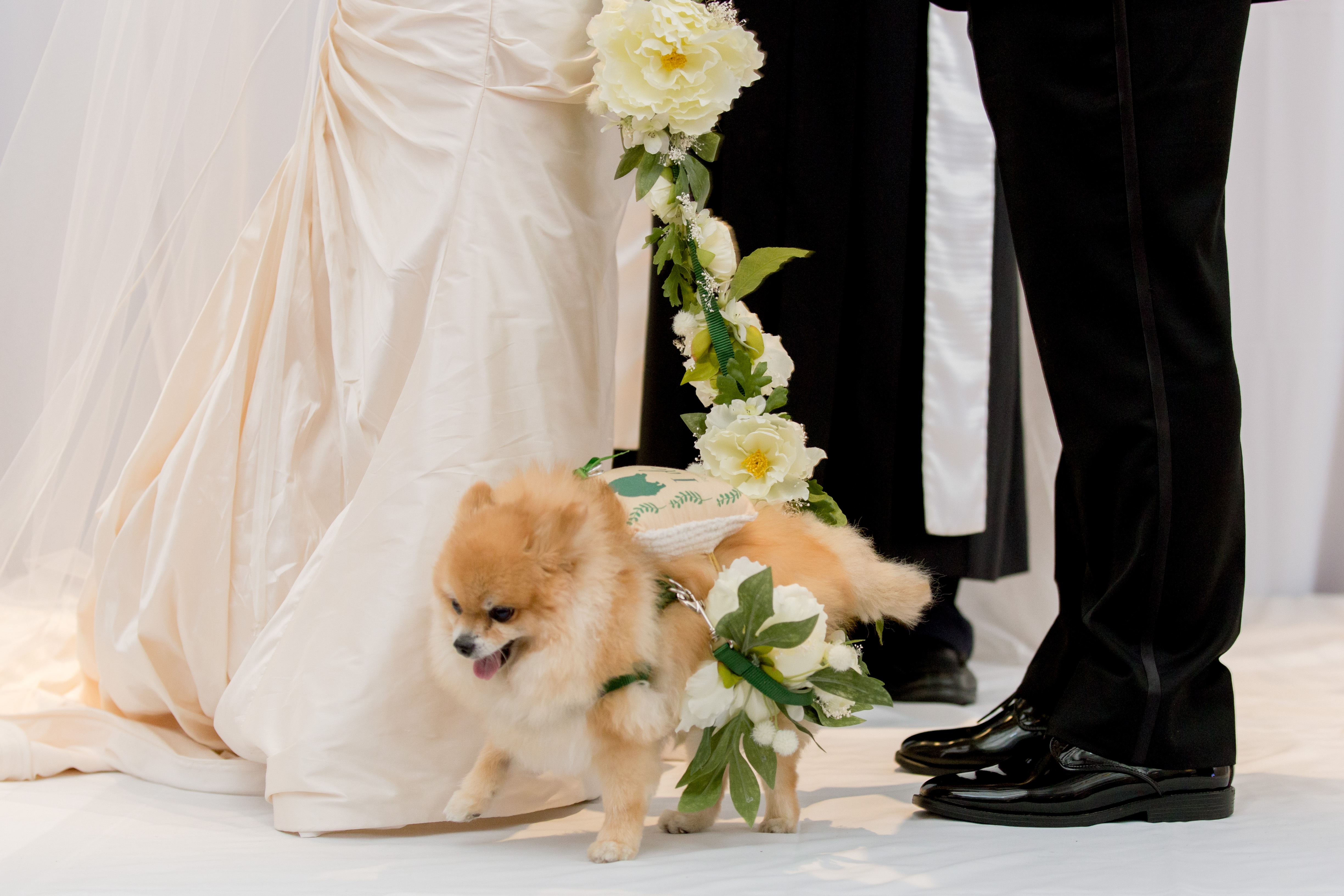
Not only are the results only based on Wedding Wire couples, but less than 3,000 per category were polled. Basically, 2,500 Wedding Wire Hispanic couples, where both people are Hispanic, said they invited about 119 people to their wedding. That is a very specific description and a very small amount of people that are part of it. Of course, it gets a little more complicated when you realize the number is even lower because you can’t use 18,000 couples divided by 7 categories unless you also know that there were no interracial couples polled.
What about the crossovers? Theoretically, a couple could fall into one of the racial categories (African-American, Asian, Caucasian, and Hispanic), as well as one of the generational categories (Gen X and Millennial), and be in the LGBTQ category. Then what?
So. Many. Questions.
The Wedding Budget
Now we get to the numbers portion of the report (thanks for your patience). According to Wedding Wire, couples spent “nearly $30,000” on their weddings in 2018, which Wedding Wire then calculates as $230 per guest. They get to the $230 per guest by using 4 more people than the average guest count of the couples polled.
They get to the $38,700 number (one line down) as the total wedding cost by adding three factors together: the engagement ring, ceremony/reception, and honeymoon. The numbers are $5,000, $29,200, and $4,500 respectfully. The total is listed as the “all in average wedding cost”. Either we assume that every single vendor these couples use (according to the poll, that’d be 14 on average) is lumped into that $29,200 number, or….?
No wonder half of couples polled spent more than they originally budgeted. This is their guide. And it’s not just Wedding Wire couples using this as a guide…it’s any couple that googles what weddings cost.
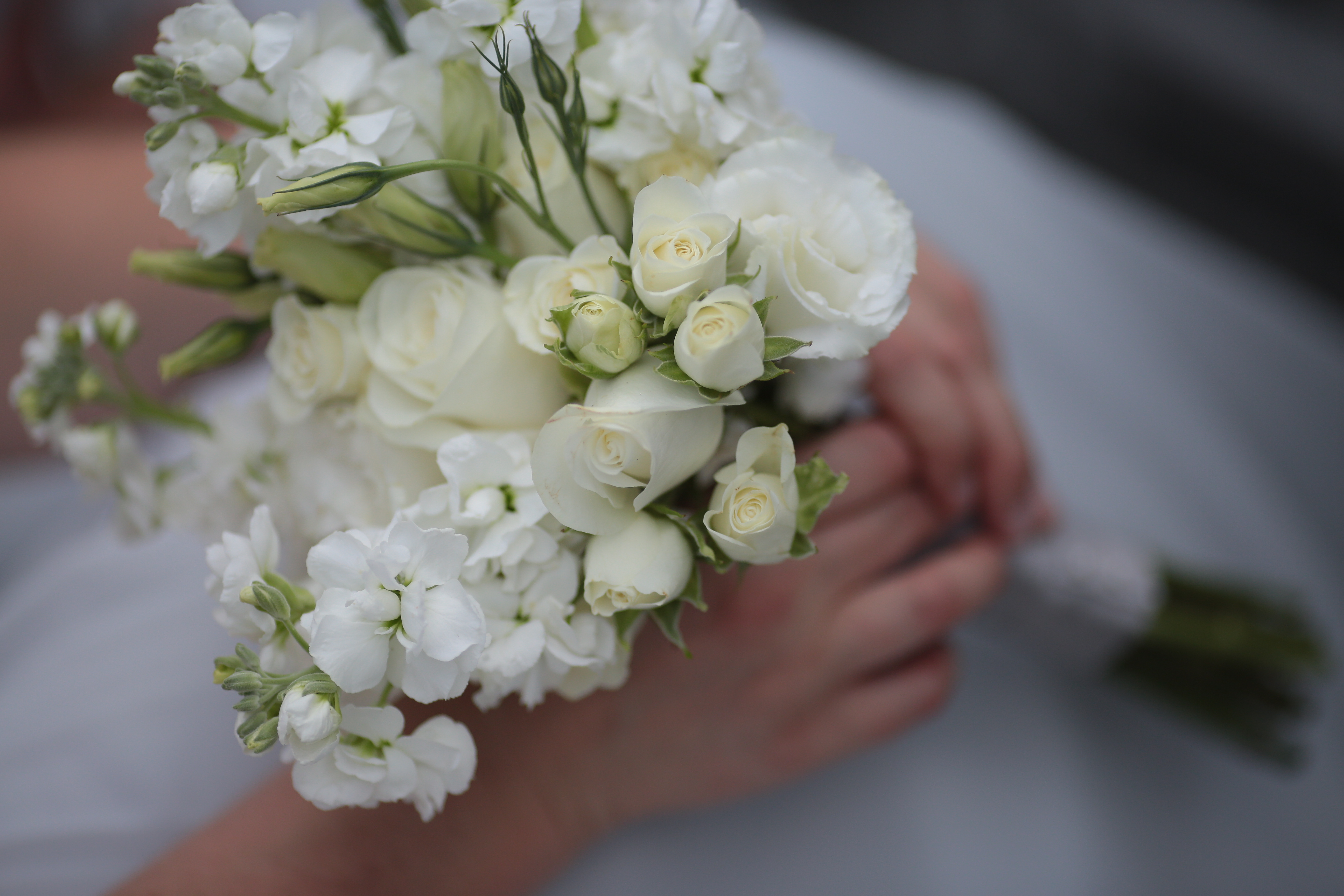
Then you scroll down further and see the breakdown of what Wedding Wire couples spent on the venue and per vendor in 2018. Start adding those numbers up, and you will go above the report’s average total wedding cost of $38,700. While I certainly cannot speak to wedding costs in every area of the country, I am well aware (as is Wedding Wire) that certain areas are more expensive than others. Yet, looking at the first line items and their associated average spends from 2018 is instantly confusing for me.
For venue, the average spend was $9,000. For catering, the average spend was $6,700. Now, there are some venues that charge a rental or estate fee, yes, but I would love to know how many couples in this sample of 18,000 had to actually pay one. Then, using Wedding Wire’s reported average guest count from 2018 of 130 people, the catering fee comes out to roughly $52 per person.
Here’s where I start to question the level of honesty these couples had when answering the poll. Earlier in the report, a large majority of the couples polled said they had an open bar. You mean to tell me that food and open bar, on average, costs $52 per person?
I wanna see receipts.
Since the total of the line items comes out higher than what Wedding Wire says was the average cost (with no explanation), and since “wedding planner” is a line item and Wedding Wire already said only 27% of their couples hired one in 2018, it’s safe to assume that every couple did not have everything on this list of wedding vendors. Make sense?
Yet another instance where less than the 18,000 couples participated. If 27% of the couples polled hired a wedding planner, that means only 4,860 of the couples answered how much they paid for one.
Also strange within the budget section, is how the cost for wedding party wardrobe is included. Are we supposed to believe that the Wedding Wire couple pays an average of $52 per person for food and alcohol, all taxes and fees included, but then pays for the dresses for their bridesmaids? That’s not even normal, regardless of your wedding budget.
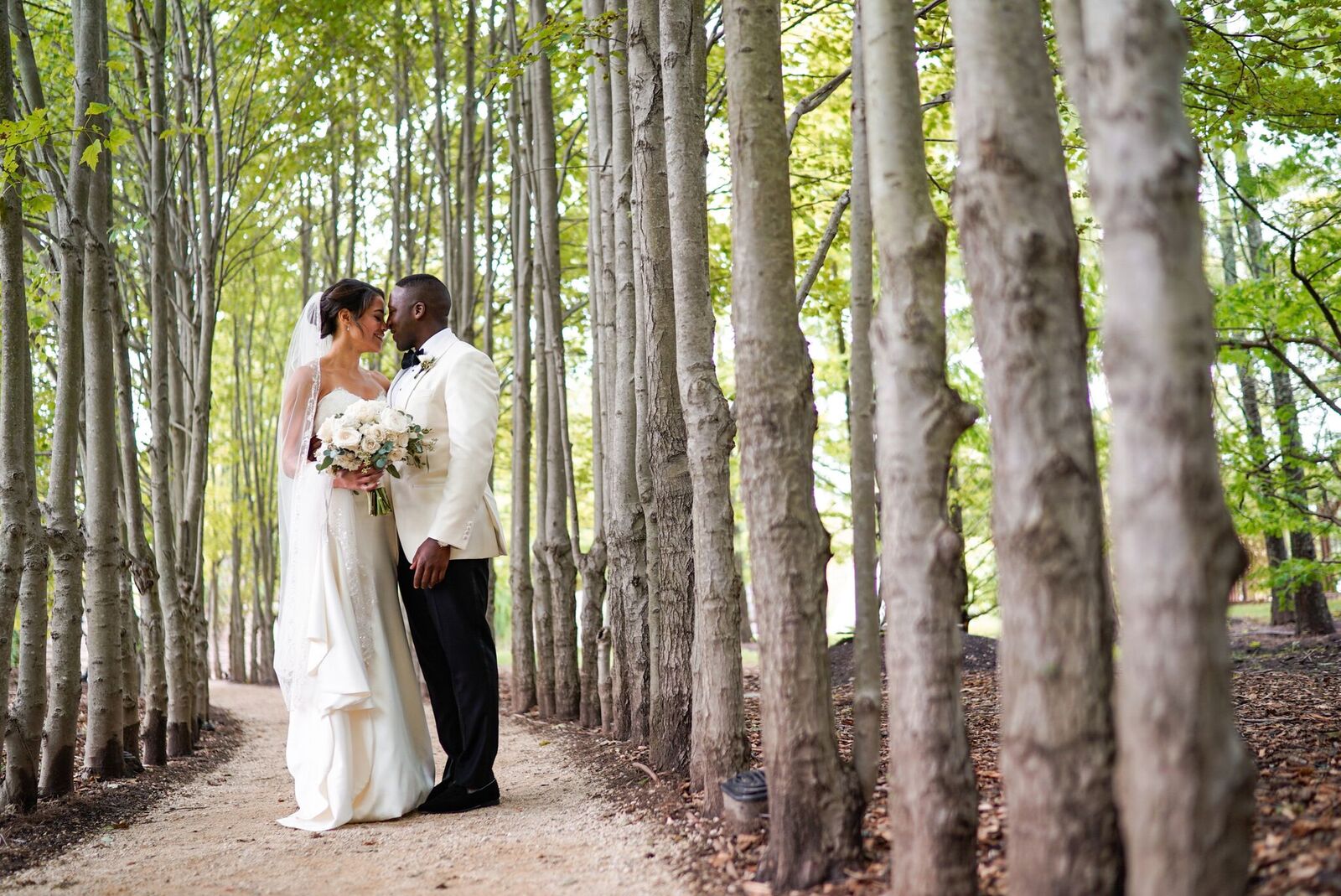
It would be more believable to say that only a handful of couples did that. In an alternate universe, I might believe that 1 out of every 1,000 couples pays for the dresses the bridesmaids will wear. If that’s the case, why is it even a line item? In fact, there are numerous vendors and categories that couples easily could have elected not to answer because they didn’t have whatever it was.
Basically, 18,000 couple were polled…most of the time.
I’m not even going to address the actual numbers of what these couples spent last year…I’ll have to put together a blog post of real wedding costs (at least for the NYC area) another day.
Deceiving Statistics
I think the most frustrating part of this report, is how engaged couples will see it as helpful. If you’re wedding planning, you’ll never know what the things that you want cost, until you actually get started. This report doesn’t tell you what these couples wanted, so revealing the average spend for flowers is meaningless.
A rose by any other name is a carnation and costs less. What the Wedding Wire couple looks for in a florist, or any other vendor, is very different than what other couples want. Again, not good, not bad, just different.
What do you think of the report? Did anything else stand out to you that I missed? If you’re planning a wedding, will you use this report when negotiating with vendors? Share your comments below and tell me what you think!

